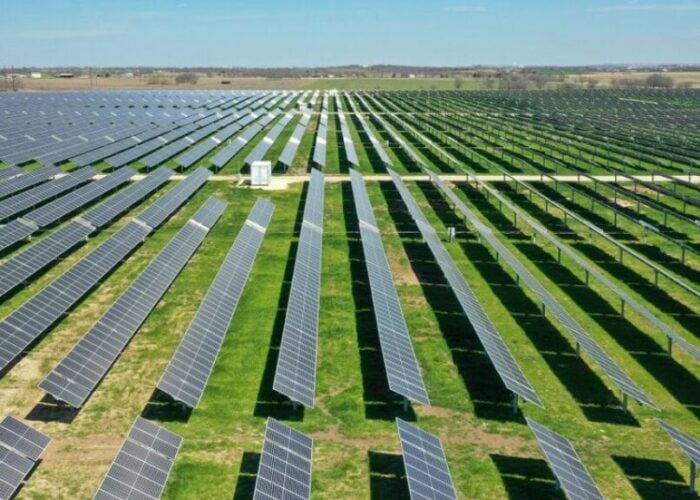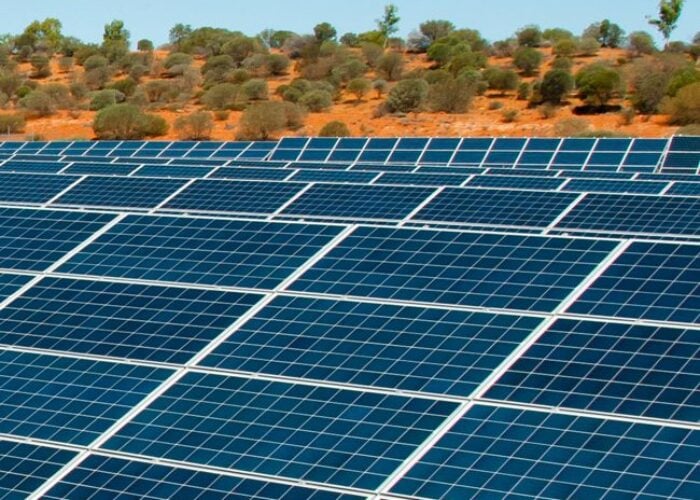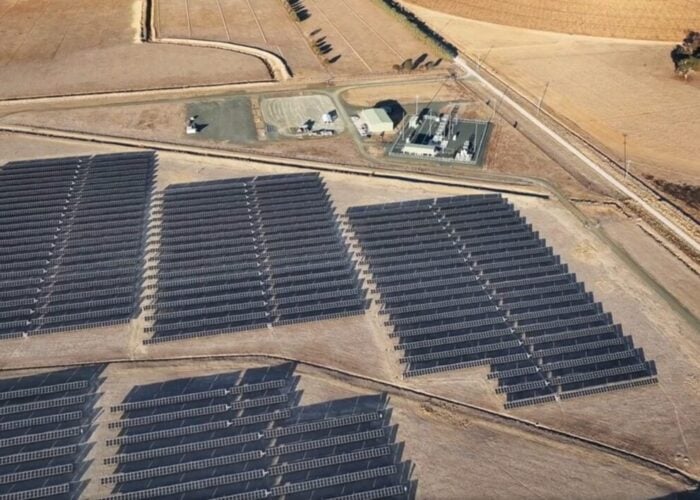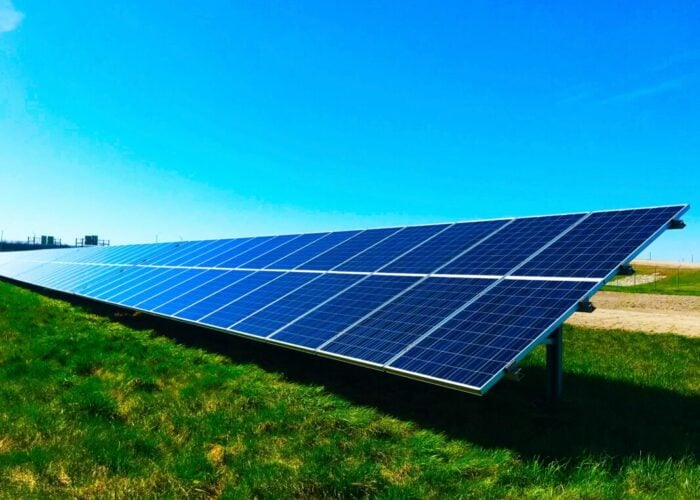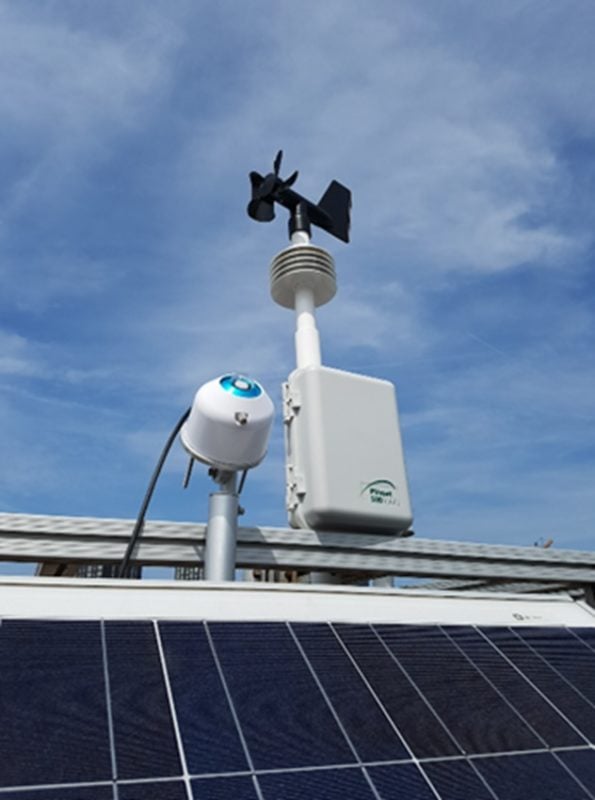
RainWise has introduced the ‘PVmet 500’ weather station series for commercial and utility-scale PV power plants, which is said to be the world’s first compact and customizable multi-function professional grade weather station specifically designed for PV efficiency monitoring. The PVmet 500 provides a cost-effective solution, measurement accuracy, and IEC-61724-1 compliance and handles multiple communication protocols for fast field acceptance.
Problem
Try Premium for just $1
- Full premium access for the first month at only $1
- Converts to an annual rate after 30 days unless cancelled
- Cancel anytime during the trial period
Premium Benefits
- Expert industry analysis and interviews
- Digital access to PV Tech Power journal
- Exclusive event discounts
Or get the full Premium subscription right away
Or continue reading this article for free
With increased adoption of high-efficiency PV panels as well as bifacial panels for commercial and utility-scale projects, greater emphasis is being placed on real-time measurement of key performance indicators such as solar irradiance, back-of-module temperature and ambient air temperatures as well as wind and rain to optimize power generation as they calculate the performance ratio (PR) of a solar power plant. This is to ensure that O&M activities in operating plants are met for performance and efficiency requirements when fault detecting, due to plant performance being sub-optimal outside real time weather conditions. Due to the common occurrence of micro-climates, reliance on satellite data and inverter data solely for plant performance analysis can lead to a mismatch between real plant performance relative to real plant weather conditions. Higher than expected irradiance can lead to underestimated plant yield that can a missed opportunity to offer higher output to the grid and increased returns. With the growing adoption of single-axis trackers for both large-area monofacial and bifacial modules, wind load factors become increasingly important as the potential for catastrophic failures due to high and specific wind conditions that can create instability phenomenon, such as torsional galloping and torsional flutter at relatively low windspeeds. However, project developers, EPC and asset owners face the challenges of minimizing weather station up-front costs, long-term reliability and component selection that matches each PV power plants requirements cost effectively that enables the maximum PV project ROI (Return on Investment) through minimizing non-optimal plant performance throughout the expected plant lifetime. This becomes increasingly important when PV power plants use high-quality BOM (Bill of Materials) with lower typical performance degradation levels that could enable operating lifetimes to be extended by more than a further 10 years.
Solution
Based on the experience of more than 8,000 PV installations worldwide since 2010, the PVMet 500 series supports up monitor global, plane of array albedo (bifacial PV) and diffused parameters that are meeting new demands from PV power plant owners and operators, including cost effectiveness. The RainWise Pvmet 500 supports up to three thermopile sensors making it suitable for bifacial PV module technology. A sample configuration could be one Global (horizontal) Irradiance sensor and two Plane of Array (POA) Irradiance sensors, mounted in the same angle as the PV modules. Likewise, the Back of Array (BOA) would fit in line with the solar panel, 180 degrees from the POA irradiance sensor. PVMet 500 is the latest modular technology for solar power monitoring and is upgradeable to support all standard weather station data values as well as being prepared for future communications standards like Modbus TCP (Ethernet), limiting further expense. The Pvmet500 offer Modbus RTU connectivity via the RS485 interface and soon the Modbus TCP via an Ethernet port. The Pvmet 500 support the popular SunSpec standard to reduce connection times and fault analysis. The series also supports up to three back-of-panel temperature sensors. The new system has the options to include all weather station parameters like an Ultra Sonic Anemometer for windspeed and direction (Optional), Mini-Aervane Anemometer windspeed and direction (Optional), Ambient Temperature (Standard), Relative Humidity (Standard), Barometric Pressure (Standard) & participation vis a Rain Gauge (Optional) PVC/Plastic &Aluminum (RGA) version.
Applications
All Commercial PV monitoring applications & smaller utility grade projects. Compatible with most PV inverter companies technology and 3rd party monitoring solutions worldwide.
Platform
This weather Station is the 6th member of RainWise family of dedicated Weather Stations for the PV market. PVmet 500 is compatible with all leading manufacturer of precision solar sensors for efficient monitoring from Thermopile, including First Class, Second Class, and Secondary Standard to the economical Silicon Diode irradiance sensors. The weather station also meets the IEC-61724-1standard for PV Monitoring Systems. The PVMet 500 series are multi Sensor Weather Station with one RTU Modbus (slave) communication protocol with an RS485 connection. The product is fully SunSpec certified and compliant. The PVmet 500 comes fully installed and only needs to be mounted and configured. No special tools, software, or on-site calibration is required. RainWise also offers expert guidance for system specifications.
Availability
The PVmet500 Modbus RTU (RS485) is available today and the PVmet 500 Modbus TCP (Ethernet) version will be available in the first quarter of 2021.

